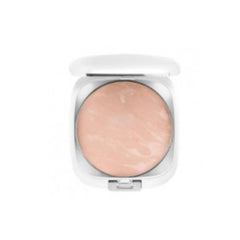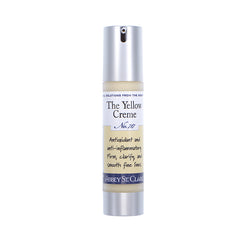The Secret Life of Mascara. Formulation, Application, and Removal.
General knowledge on mascara.
Mascara is one of the most difficult color cosmetics to formulate. There are some variations in the ingredients, but when all is said and done, the real secret to mascara is the brush. Cosmetic producers rarely patent their mascara formulations, but almost all patent the brush prior to the launch of new mascara. Innovative brush technology can camouflage even the worst formula.
Mascara brushes, things to consider:
- Longer bristles produce a more natural appearance. Apply several thin coats to separate and define lashes.
- Bristles of a higher density provide a thicker application.
- Curved brushes produce a curling action on lashes.
- Hollow bristles – this includes some of the newer rubber brushes-- have lash building properties.
- Comb-like bristles help separate and lengthen the lashes.
The most important factor in mascara formulation is the film that gets deposited on your lashes. The film is based on emulsifiable waxes such as carnauba (yes, the same as the car wax), beeswax, or candelilla. All mascaras include some combination of esters, emollients, moisturizers, antioxidants, and preservatives. Water-resistant mascaras deposit a tightly bonding polymer film that seals the lashes to survive high humidity, a swim, or a good cry. This bonding action is also difficult to remove (See Removal Techniques below.) and is the primary reason you develop broken, sparse, or stubby lashes. It is best to restrict waterproof mascara to the beach, sad movies, weddings, and funerals. Mascara coloration is usually due to iron oxides, inorganic pigments, or Carbon Black (D&C Black#2). For years cosmetic companies fought each other to produce the blackest black, but FDA approval of Carbon Black (fine particles of purest carbon), allowed every manufacturer to achieve an intense black black. Mascara color is not limited to black or brown. Intense blue, purple, burgundy, or green are becoming increasingly popular. Subtle colored mascara is often recommended for a more youthful appearance. Colored mascara can be a nice change for variety, for the evening, or just because. It is best to avoid colored mascara in the workplace if you want to present yourself as a professional. In the end, you cannot go wrong with black.
Easily make your own colored mascara.
- Dip a disposable mascara brush into any mascara tube.
- Dust with a Colours powder, tapping to remove excess.
- Apply gently to lashes.
Mercury in mascara was a recent concern but it has since been removed from the majority of mascara products. Mercury was used because it is antimicrobial and a good preservative, extending the life of the product. Mercury accumulation in the body is poisonous and can cause neurological symptoms in adults and slow brain development in children and fetuses. Federal law currently allows eye products to contain up to 65 parts per million of mercury as a preservative, most often seen under the name of thimerosal. Err on the side of safety. Any product that lists thimerosal as an ingredient should be avoided. And while we’re talking about preservation, mascara is the one product that should be replaced sooner rather than later. The nature of delivery lends itself to contamination. Recommendations range between three weeks and three months. While six months is acceptable for some brands, we prefer a four to eight week limit. These are your eyes we’re talking about here.
Successful Application of Mascara
Mascara application should be the last step in your eye makeup routine.
Curling lashes:
- If you are going to curl your lashes, do it now on clean, dry lashes. Use a curler that curves with your eyes and contains a rubber pad. (Replace pad often.) Curling lashes after mascara will cause breakage.
- Clamp curler on the roots of lashes and hold for a count of five.
- Open curler completely to avoid pulling out lashes.
- If desired, repeat on the middle or ends of lashes.
- Apply mascara immediately as it will hold the curl. Repeat with other eye.
Prep tips:
- Mascara is best applied while looking down into a mirror so you can see to the bottom of the lashes.
- Remove wand from tube in one motion. Never pump the wand as it introduces air into the tube and dries the formula out. It can also introduce bacteria into the tube.
- Holding a credit card or similar type of paper barrier over the eyelid at the lash-line can help keep stray mascara flakes off the upper lid.
Application:
First upper lashes.
- Place brush at lash line, parallel to eyelid, and move it slowly towards the tips, wiggling it as you move it forward.
- Let dry before applying second coat.
- Several thin coats are better than one thick coat. (Increased length can often be obtained by applying the first coat on the upper side of lashes and the second coat on the underside of the lashes.)
- Use an eyelash comb to separate lashes further.
- If desired, dust tips, or complete lash with a touch of color for interest or glam.
- Apply a light amount of extra mascara to lashes at corners of eyes, or to lengthen the tips.
Then lower lashes.
- Use less mascara for the lower lashes.
- Place wand where lashes meet the rim of the lower eyelid.
- Gently stroke downward. Use a cotton swab to remove any stray mascara from eye area. Dip swab in eye makeup remover for stubborn flakes. Mineral makeup repairs beautifully.
Successful Mascara and Eye Makeup Removal Techniques.
Never go to bed wearing eye makeup. Your face ages three days every time you go to bed without removing your makeup. The least of your problems would be waking up with raccoon eyes. The worst of your problems would be infection or puffy, red, swollen eyes caused by mascara entering your eyes. Mascara left on lashes overnight increases breakage and lash fallout. Keep lashes conditioned and the eye area smooth and firm by removing all makeup and applying appropriate eye treatments. We especially recommend Lash and Brow Enhancement Serum, Essential Eye Crème, Night Line Relief Serum, Rosehip Serum, Carrot Repair Serum, and Rice and Olives Deep Cleansing and Facial Serum
Eye Makeup Removal.
- Be gentle. Never rub or pull.
- Use a cleanser made for eye makeup and the fragile skin around the eye.
Rice and Olives Deep Cleansing and Facial Serum was especially formulated for the eye area (and along the way we discovered it is also a wonderful overall cleanser and facial antioxidant serum). It melts away even heavy mascara, requiring only gentle massaging of lids and lashes. Gently wipe away the emulsified cosmetics with a wet face cloth. Repeat process for stubborn spots.
White Tea Cleansing Milk is gentle enough for eye makeup removal and includes highly antioxidant white and green tea to condition skin while cleansing. Always use a wet face cloth to remove any facial cleanser.
Eye makeup is often drying. After cleansing, apply creams or serums to condition the total eye area and prevent wrinkles, discoloration, puffiness, or droopy lids. Use Lash and Brow Enhancement Serum at night for healthy lashes and brows and to encourage fullness.
Leave a comment
Comments will be approved before showing up.
Also in Abbey St Clare Blog

The Wheel is Turning. Abbey St. Clare has Closed.
Hello Friends,
The wheel is turning. Transitions are on the horizon. It is with regret that after almost twenty years, Abbey St. Clare is winding down as retirement and a relocation take place in the near future. We will continue taking orders through September 15.

Fix These 5 Hair-Washing Mistakes For Healthier Hair
Is your hair feeling brittle? Scalp dry? Locks not as lustrous as you want them to be? It’s possible you’re damaging your hair with five hair-washing mistakes.
If you follow these guidelines, you will see significant improvement in your hair and scalp health.

Pamper Your Skin and Elevate Your Mood With Essential Oils
Have you ever caught a whiff of cinnamon and felt a boost in your mood instantly? Do you feel calmer and more at ease when using lavender lotion before bed? If you said yes, it’s not just a figment of your imagination!
Ask anybody who uses essential oils regularly, and they’ll probably agree: these natural botanicals can have powerful, positive effects on your mood and overall wellness.



